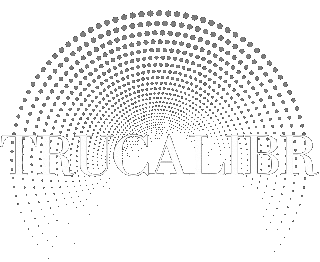What is the FIRE movement?
The FIRE movement, which stands for Financial Independence, Retire Early, is a lifestyle and financial strategy that aims to achieve financial independence and retire at an early age. It involves saving a significant portion of income, reducing expenses, and investing wisely to accumulate enough wealth to sustain one’s desired lifestyle without relying on traditional employment.
The core principles of the FIRE movement include:
- Financial Independence: The goal is to have enough passive income or investments to cover living expenses.
- Retiring Early: The aim is to retire from traditional work in one’s 30s, 40s, or early 50s.
- Saving and Investing: A high savings rate is crucial, typically around 50% or more of income. Investments are made in stocks, bonds, real estate, and other assets.
- Simplifying Lifestyle: Minimizing expenses by adopting a frugal lifestyle and focusing on what truly brings happiness.
The FIRE movement gained popularity through online communities and blogs where individuals share their experiences, strategies, and success stories. It has attracted people from various backgrounds who aspire to gain financial freedom and live life on their own terms.
How can someone achieve financial independence?
Achieving financial independence requires careful planning and disciplined execution. Here are some steps that can help someone on their journey towards financial independence:
- Create a Budget: Start by tracking income and expenses to understand where money is being spent. Identify areas where expenses can be reduced.
- Save and Invest: Aim to save a significant portion of income, ideally 50% or more. Invest the savings in diversified portfolios, including stocks, bonds, and real estate.
- Reduce Debt: Pay off high-interest debts as quickly as possible to free up more money for savings and investments.
- Increase Income: Look for opportunities to increase income through side hustles, freelancing, or career advancement.
- Minimize Expenses: Adopt a frugal lifestyle by cutting unnecessary expenses and focusing on essential needs.
- Continuously Educate Yourself: Learn about personal finance, investing strategies, and ways to optimize wealth accumulation.
- Create Multiple Income Streams: Diversify income sources by investing in rental properties, starting a business, or generating passive income through investments.
- Prioritize Long-Term Goals: Stay focused on long-term financial goals rather than short-term gratification.
- Maintain an Emergency Fund: Have a separate fund for unexpected expenses to avoid dipping into long-term investments during emergencies.
What are the benefits of the FIRE movement?
The FIRE movement offers several benefits for those who embrace its principles. Here are some key advantages:
- Financial Freedom: Achieving financial independence provides freedom from financial stress and the ability to make choices based on personal values rather than financial constraints.
- Early Retirement: The ability to retire early and enjoy more leisure time, pursue passions, or engage in meaningful activities.
- Flexibility: Financial independence allows for greater flexibility in career choices, including pursuing entrepreneurial ventures or working part-time.
- Reduced Stress: By eliminating financial worries and having a secure financial foundation, individuals can experience reduced stress levels.
- Pursuit of Personal Goals: FIRE enables individuals to focus on personal goals such as travel, hobbies, spending time with family, or giving back to the community.
- Wealth Accumulation: The disciplined saving and investing approach of the FIRE movement can lead to significant wealth accumulation over time.
Is the FIRE movement suitable for everyone?
The FIRE movement may not be suitable for everyone due to individual circumstances and preferences. Here are some factors to consider:
- Risk Tolerance: The FIRE movement often involves aggressive saving and investing strategies that may not align with everyone’s risk tolerance.
- Lifestyle Preferences: Embracing a frugal lifestyle and making sacrifices in the present may not be appealing or feasible for everyone.
- Career Satisfaction: Some individuals find fulfillment in their careers and may not desire early retirement.
- Familial Responsibilities: Family obligations or dependents can impact one’s ability to save aggressively or retire early.
- Economic Factors: Economic conditions, job stability, and access to affordable healthcare are important considerations when planning for early retirement.

How can someone start their FIRE journey?
Starting the FIRE journey requires commitment and a strategic approach. Here are some steps to begin:
- Evaluate Current Financial Situation: Assess income, expenses, debts, and assets to understand the starting point.
- Set Financial Goals: Define short-term and long-term financial goals, including the desired age of retirement.
- Create a Budget: Develop a budget that prioritizes savings and investments while minimizing unnecessary expenses.
- Save Aggressively: Aim to save a significant portion of income by cutting back on non-essential spending.
- Invest Wisely: Learn about different investment options and develop an investment strategy aligned with risk tolerance and goals.
- Educate Yourself: Continuously learn about personal finance, investing, and strategies to optimize wealth accumulation.
- Track Progress: Regularly monitor savings, investments, and progress towards financial independence.
- Maintain Discipline: Stay committed to the plan even during challenging times or when faced with temptations to overspend.
- Celebrate Milestones: Acknowledge achievements along the way to stay motivated and inspired on the FIRE journey.
Summary Table
| Title | Description |
|---|---|
| The FIRE Movement: Exploring Financial Independence & Early Retirement | This article delves into the FIRE (Financial Independence, Retire Early) movement, answering common questions and providing insights on achieving financial independence, benefits of the movement, suitability for individuals, and how to start the FIRE journey. |
| What is the FIRE movement? | The FIRE movement is a lifestyle and financial strategy aiming for financial independence and early retirement through saving, investing, and reducing expenses. |
| How can someone achieve financial independence? | Achieving financial independence involves creating a budget, saving and investing wisely, reducing debt, increasing income, minimizing expenses, continuous education, creating multiple income streams, prioritizing long-term goals, and maintaining an emergency fund. |
| What are the benefits of the FIRE movement? | The benefits of the FIRE movement include financial freedom, early retirement opportunities, flexibility in career choices reduced stress levels pursuit of personal goals wealth accumulation. |
| Is the FIRE movement suitable for everyone? | The suitability of the FIRE movement depends on factors such as risk tolerance lifestyle preferences career satisfaction familial responsibilities economic factors. |
| How can someone start their FIRE journey? | To start their FIRE journey individuals should evaluate their current financial situation set goals create a budget save aggressively invest wisely educate themselves track progress maintain discipline celebrate milestones |
Conclusion
The FIRE movement offers a unique approach to achieving financial independence and early retirement. By adopting principles of high savings, wise investments, and a frugal lifestyle, individuals can strive for financial freedom and the ability to retire at an early age. However, it is important to consider personal circumstances, risk tolerance, and lifestyle preferences before embarking on the FIRE journey. Continuous education and disciplined execution are key to success in this movement.







